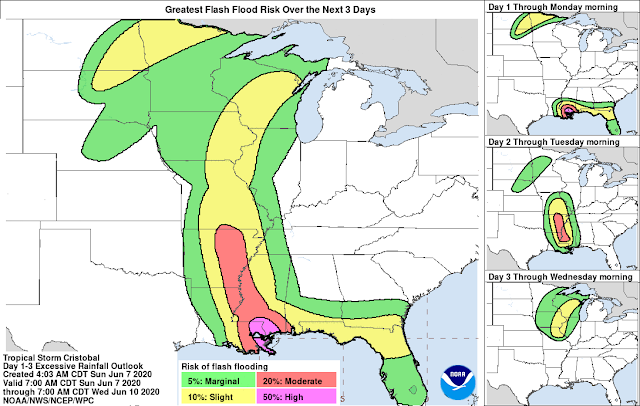The tropics have sparked back to life, sort of. Subtropical Depression 4 formed on Monday afternoon north of Bermuda. By Tuesday afternoon, it had consolidated and strengthened enough to get upgraded to Tropical Storm Dolly, the fourth named storm of the season. As of 5pm EDT on Tuesday, Dolly has peak sustained winds of 45 mph and is forecast to weaken as it heads northeast over cooler water. It has had the benefit of the warm Gulf Stream water up until now.
Zooming out of that first satellite image a bit, we see Dolly located south of Nova Scotia, and we also see the spectacular plume of Saharan dust that has been making its way across the tropical Atlantic for the past week or so. It now covers Puerto Rico, Hispaniola, Jamaica, and Cuba. It will reach south Florida on Wednesday. This is a very common thing to happen in June and July, but this plume happens to be more dusty/dense than most, so it's getting more attention than most.
We're already on the fourth named storm on June 23. Over the past 50 years, the average date of fourth named storm formation is AUGUST 21! Only two other years have had four named storms by this date: 2016 and 2012. Those years ended up with 143% and 133% of the activity in an average year, respectively (defined in terms of ACE, or Accumulated Cyclone Energy).
Once this big Saharan Air Layer outbreak settles down, the tropical Atlantic should become more conducive for activity (another 1-2 weeks?)... and the next two names on the list are Edouard and Fay.
P.S. If anyone wants an excursion, 2008's Dolly was a very interesting hurricane!


















